
ATLAS
The ATLAS detector was built to study proton-proton collisions at a center of mass energy of 14 TeV. It provides an excellent chance of discovering new forms of matter such as supersymmetric states. The lightest supersymmetric state is a prime candidate for the dark matter in the universe.UChicago ATLAS Site
CERN ATLAS Site
Faculty: Karri DiPetrillo, Young-Kee Kim, Frank Merritt, David Miller, Mark Oreglia, Jim Pilcher, Mel Shochet

SBN Program at Fermilab
The Short-Baseline Neutrino (SBN) program will address recent experimental anomalies in the field that could be understood as evidence for ‘sterile’ neutrino particles, if confirmed. To do so, SBN will search for neutrino oscillations over a short-baseline (<1km), or equivalently at high mass-splitting, using three 100+ ton-scale liquid argon time projection chamber detectors in the same neutrino beam at Fermilab.Faculty: Dave Schmitz
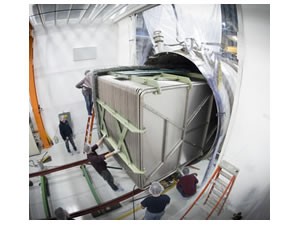
DUNE
The international neutrino physics community has come together to develop the Deep Underground Neutrino Experiment (DUNE), a leading-edge experiment for neutrino science and proton decay studies. This experiment, together with the facility that will support it, the Long-Baseline Neutrino Facility (LBNF), will be an internationally designed, coordinated and funded program, hosted at the Fermi National Accelerator Laboratory (Fermilab) in Batavia, Illinois.Faculty: Ed Blucher, Dave Schmitz

E14 at JPARC
This group primarily focuses on the measurement of the branching ratio of a very special rare kaon decay, a k-long particle decays into a neutral pion and two neutrinos (so called the "golden" mode). This decay mode provides the cleanest and best answer to the question of CP violation in elementary particle physics that the theoretical calculation (prediction) within the so called Standard Model is unambiguous and precise. Therefore no matter what the measurement result is, standard or non-standard; it will be most fascinating.UChicago E14 Site
KEK e391 Site
Faculty: Yau Wah
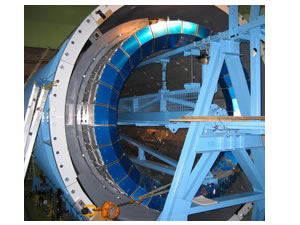
Future Accelerator Research and Development
Several faculty and students are studying new methods of particle accelerator and how to measure beam properties.Faculty: Kwang-Je Kim, Young-Kee Kim, Karri DiPetrillo
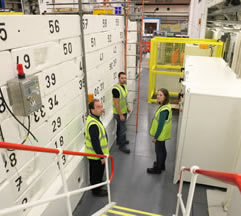
Large-Area Picosecond Photo-Detectors
We have proposed using micro-channel plates (MCP-PMTs) with a novel equal-time anode and with capacitive-return-path coupling to measure the time-of-flight of relativistic particles with 1 psec resolution. The proposed readout electronics for each MCP-PMT unit consists of 4 identical front-end ASICs and one DAQ ASIC that digitizes the front-end outputs, distributes the system clock, and handles all digital traffic. The front-end ASIC chip is a `time stretcher', converting the difference in times between start and stop pulses into a digital pulse with width proportional to the input time interval but stretched by a factor of 200. We are designing in the IBM 0.13um SiGe BiCMOS 8HP process, The circuitry includes a limiting amplifier and a constant-fraction discriminator. The DAQ chip then digitizes the stretched time interval. The preliminary design and detailed simulations of the front-end ASIC chip will be presented.Faculty: Henry Frisch
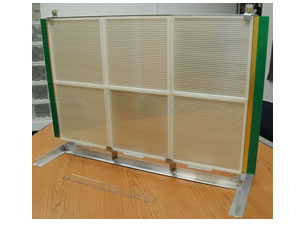
XENON-1T
The XENON-1T experiment, scheduled to be deployed at Laboratori Nazionali del Gran Sasso (LNGS) during the last quarter of 2015, will search for the elusive dark matter with a 3500kg liquid xenon detector. The XENON-1T experiment, thanks to its design, large fiducial mass, and increased sensitivity to WIMPs, will soon probe properties of dark matter in yet unexplored regions and will “open” a second phase of dark matter searches with multi-ton noble liquid detectors.Faculty: Luca Grandi
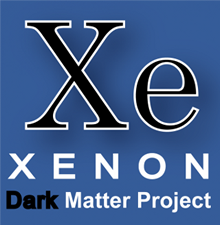
Previous Projects
CDF
CDF (Collider Detector at Fermilab) was an experiment at the Tevatron proton - antiproton collider at Fermi National Accelerator Laboratory.Outerveto
Project to construct the outer muon veto and tagging system for the Double Chooz neutrino oscillation experiment.APS Neutrino Study
A year-long study on the physics of neutrinos.Braidwood Experiment
Two-location neutrino oscillation experiment at the Braidwood Nuclear Power Station in Illinois to measure Θ13.SNO+
SNO+ is a new kilo-tonne scale liquid scintillator detector that will study a variety of topics in neutrino physics. The primary goal of the experiment is the search for neutrinoless double beta decay of 130Te. The experiment is located approximately 2 km underground in VALE's Creighton mine near Sudbury, Ontario, Canada. tFaculty: Ed Blucher
Double Chooz
The Double Chooz experiment, which will be performed at a commercial nuclear power station near the border between France and Belgium, will search for the last unmeasured angle of the neutrino mixing matrix with an order-of-magnitude better precision than previous experiments. A nonzero value for this mixing angle would open the possibility of searching for CP violation in neutrino oscillations.UChicago Double Chooz Site
Main Double Chooz Site